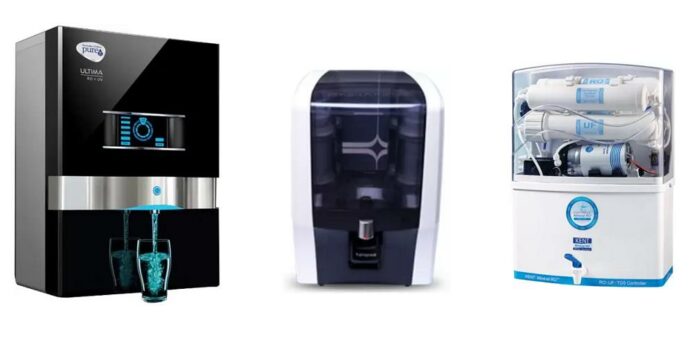Water filtration is the process of eliminating germs and other particles from water. In other words, filtration is purely a purification process. There are so many benefits of purifying water. That is why we all need a water filtration system. While there are so many water filtration systems with unique features, not all of them can meet your expectations. In this blog, we are going to focus on the three most popular water filtration technologies for the home. Read to the end and see the one that suits your condition.
1- Reverse Osmosis Filters
The Reverse Osmosis (RO) is a simple technology that uses a high-pressure pump to shove water through a semipermeable membrane. The water that passes through the membrane comes out pure while impurities are trapped behind the wall of the membrane. A few millimeters behind the wall is a discharge drain to release germs. The drain gets rid of the pathogens to eliminate risks of further contamination.
What the System Eliminates
The sole purpose of a Reverse Osmosis Filter is to remove germs. But, what specific kind of germs does it get rid of? One, it eliminates heavy metals such as lead. The naturally occurring metal enters the water through corrosive plumbing systems or through natural deposits’ erosion into the water source. The metal is highly poisonous and may harm the brain boy organs such as kidneys, bones and liver.
Other metals eliminated include manganese, arsenic, copper, chromium, nickel, and aluminium, among others. The Best Reverse Osmosis System helps extract water hardness, nitrates, pesticides, dissolved compounds, salts, taste, smell and color from water.
Advantages of Reverse Osmosis Filters
- Available in various sizes. Reverse Osmosis Filters can be found in a variety of sizes, and therefore you an opportunity to choose what’s convenient for you. This also means the prices vary, and so you can comfortably afford.
- Effective. It eliminates 95-99% of waste, including dissolved solids.
- Uses a small amount of energy. Power consumption has become a concern for everyone in recent years. But here is a system with less power consumption.
- It is easy to maintain.
Disadvantages of Reverse Osmosis Filters
- Reverse Osmosis Filters are relatively expensive in comparison to other water filtration technologies
- It is slow and wasteful. The process wastes almost three times the amount of water it purifies.
- Does not eliminate 100% of the waste. Reverse Osmosis Filters are effective but allows up to 5% of waste to pass through the semipermeable wall, which could still be harmful.
- It does not last long. The system lasts for about a year. Twelve months is not such a long time, meaning you will be replacing your machine regularly.
2- Multi-media Filters
The system comprises more than two layers of solid suspensions’ trapper and is used to minimize the Silt Density Index (SDI). A bottle-like filter is filled with several layers of different filters for sieving. There is a pressure relief valve which allows water to trickle in. The layers in the filter container allow almost pure water to pass through while solvents and other solid particles are tracked behind.
In most cases, fine materials are placed on top while coarse ones remain at the bottom. With this kind of setting, large particles contaminating the water are trapped at the top while fine ones are removed at the bottom, after which the water is let out through a recycling outlet.
Different technologies have a specific waste product they remove. Multi-media filters focus on eliminating all particles irrespective of their sizes. The filter container arrangement cannot allow any solid material, whether fine or coarse, to pass through.
Advantages of Multi-Media Filters
- Self-cleaning. The technology can clean itself through backwashing. This is an attribute only unique to multi-media filters, the rest cannot.
- Increase in turbidity. The water appears with more clarity that is turbidity. The more the filter sieves water, the more the outlet gives clean water.
- Eliminates even the tiniest of particles. Multi-Media Filters can get rid of particles.
Disadvantages of Multi-Media Filters
- The water flow gets slower with time. This means, the more the machine is in use, the more its efficiency declines. Therefore, more is spent on maintenance.
- A short lifetime. With regular maintenance in place, still, the Multi-Media Filters only last for a shorter time than the other technologies.
3- UV Water Filters
This technology uses UV light to destroy the DNA of microorganisms. By doing so, the organisms are unable to neither reproduce nor harm you. The UV light is set at a frequency of about 254 nm. It eliminates such microorganisms as Salmonella, Cryptosporidium, Legionella and Hepatitis, among others.
Advantages of UV Water Filters
- UV Water Filters are simple to maintain. Although there is a need for regular maintenance. For instance, the UV lamp and the neighboring filter should be replaced yearly.
- Unlike methods which use other matter to sieve water, this technology uses UV light. The matter used in other methods may itself be a cause of impurity.
- Can be used with other filtration methods.
Disadvantages of UV Water Filters
- The water must be clear for the UV light to reach the germs.
Conclusion
Water filtration is common at homes with households improvising technologies to create cheap, efficient and effective systems. There are different filtration approaches used by families. In this blog, we have discussed the most common filtration technologies. Which ones interest you? Let us know by dropping your comment below.





















